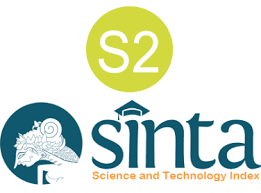Gerakan Silicon Valley Indian Professionals Association (SIPA) Dalam Membantu India Mengubah Brain Drain Menjadi Brain Circulation
Abstract
India has a lot of skilled IT workers and most of them migrate to US. In migration studies, this situation is called brain drain. Migration of skilled workers from developing countries to developed countries. This research tries to analyze the movement of an Indian IT diaspora network in U.S, the Silicon Valley Indian Professionals Association (SIPA),which is trying to help India to reduce the impact of brain drain and to create brain circulation.
This research is a library research and uses neogramscian framework.This research concluded that brain drain is one of commodification on skilled term. Today, commodification is not only for raw materials, but also skills. This situation faces by skilled labour when they migrate to developed countries and used to support the privillege of developed country. SIPA as Indian diaspora success to create brain circulation for India. SIPA seeks to transform the workers to work in India from early worked in the US, by increasing workers' technical knowledge, entrepreneurship, and understanding migrant contribution for home country or to India. Besides, SIPA also seeks to cooperate with Indian government created a comparative advantage for the IT industry in India.
Full Text:
PDFReferences
Bieler, Andreas, dan Adam David Morton. Images of Gramsci Connections and Contentions in Political Theory and International Relations. New York: Routledge, 2006.
Brown ,Judith. M, dan R. Foot.Migration: The Asian Experience.London: Mac Millan,1994.
Brown,Judith M. Global South Asia Introduction The Modern Diaspora. Cambridge: Cambridge University Press,2006.
Cox, Robert dan Timothy J Sinclair. Approaches to World Order. Cambridge; Cambridge University Press, 1996.
D,Northrup.Indentured Labor in the Age of Imperialism 1834–1922.Cambridge: Cambridge University Press,1995.
Gill,Stephen, eds. Gramsci, Historical Materialism And International Relations. Great Britain: Cambridge,1993.
Hirschman, Charles. The Handbook of International Migration an American Experience. Russell: Sage Foundation,1999.
Hoare,Quintin dan Geoffrey Nowell Smith, Selections From The Prison Notebooks of Antonio Gramsci. New York: International Publishers,1992.
Khadria,Binod.The Migration of Knowledge Workers: Second–Generation Effects of India’s Brain Drain, New Delhi:Sage Publications,1999.
Kuznetsov,Yevgeny. Diaspora Networks And The International Migration Of Skills : How Countries Can Draw On Their Talent Abroad. Washington : World Bank,2006.
Mann ,Catherine L.Accelerating The Globalization Of America : The Role For Information Technology.Washington DC: United Book Press Inc,2006.
Saxenian,AnneLee. Sillicon Valley’s New Immigrant Entrepeneurs. California: Public Policy Institute Of California. 1999.
Tinker,H. A New System of Slavery; The Export of Indian Labour Overseas 1830–1920.London, Oxford University Press,1994.
Van der Pijl, Kees. Transnational Classes And International Relations. London: Routledge, 1998.
Wächter,Bernd. Brain Drain: What We Know And What We Do Not Know. Brussel: Portland Press,2006.
World Bank Institute Development Studies, Studies Diaspora Networks and the international migration of skills.Washington:WBI,2006.
Wyn,Richard Jones.Critical Theory and World Politics.London:Lynne Rienner Publishers,2001.
Jurnal
Gill,Stephen. “Toward a Postmodern Prince? The Battle in Seattle as a Moment in the New Politics of Globalisation,” Millennium - Journal of International Studies 29,no.1(2000):131-140.
Khadria, Binod, “Patents, Brain Drain and Higher Education: International Barriers to the Diffusion of Knowledge Information and Technology,”Social Scientist Vol. 18, No. 5 (May, 1990): 3-18.
Khadria, Binod. “Skilled Labour Migration from Developing Countries: Study on India,” International Migration Papers 49,Geneva: International Labour Office,2002.
Khadria, Binod. “Skilled Migration To Developed Countries, Labour Migration To The Gulf,”New Delhi: Jawaharlal Nehru University, 2002.
Matloff, Norman.” On The Need For Reform Of The H-1B Nonimmigrant Work Visa In Computer-Related Occupations,” Journal Of Law Reform University Of Michigan,Vol. 36, Issue 4, (Fall 2003):815-914.
Saxenian,Anna Lee.”Brain Circulation: How High-Skill Immigration Makes Everyone Better Off,” The Brookings Review Vol.20 No.1(Winter 2002):28-31.
Varma,Roli.”Changing Borders and Realities: Emigration of Indian Scientists and Engineers to the United States,” Perspectives on Global Development and Technology vol 6 no 10 (2007):539-556.
Website
BBC, International Migration, Remittances, and the Brain Drain http://news.bbc.co.uk/2/hi/south_asia/1432702.stm (diakses pada 13 Januari 2011)
Brain drain costs Asia billions, http://news.bbc.co.uk/2/hi/south_asia/1432702.stm (diakses pada 13 Januari 2011).
Indian economy today, http://www.indianchild.com/india_economy_growth.htm, (diakses pada 21 Desember 2010).
Indian migrant in AS http://www.migrationinformation.org/usfocus/display.cfm?ID=638 (diakses pada 1 Mei 2011).
Indian-us bilateral mou of workers’s right, http://www.indianembassy.org/prdetail1859/shri-mallikarjun-kharge,-union-minister-for-labour-and-employment-and-u.s.-labour-secretary-ms.hilda-solis-signing-an-india-u.s.-bilateral-memorandum-of-understanding. (diakses pada 4 Februari 2012)
Infosys,http://www.infosys.com/pages/index.aspx(diakses pada 1 Mei 2012).
International Migration,”immigration research”, http:// faculty. washington. edu/charles/pubs/1999 -international Migration _ Immigration Research.pdf .(diakses pada 12 April 2011).
US Census Bureau, International Data Base, “Country Rankings; United Nations Department of Economic and Social Affairs, Population Division, Trends in International Migrant Stock: The 2008 Revision”, http://www.migrationinformation.org/datahub/charts/worldstats_13211.aspx ,(diakses pada 1 Desember 2010).
Refbacks
- There are currently no refbacks.










